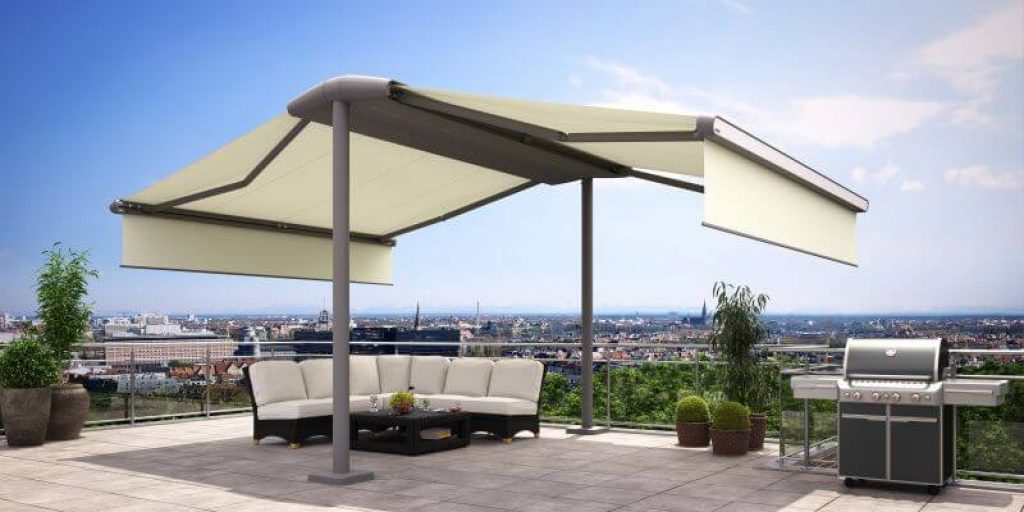In the quest for a more energy-efficient home, you’ve probably looked into big-ticket items like appliances and insulation. But there’s one feature, quietly doing its job outside your window, that may not have crossed your mind—your awnings, modest yet mighty tools in energy conservation.
Often overlooked, awnings are far from being just additional frills for your home, whether small or spacious. These architectural elements do more than just add to the aesthetics of your abode. They carry an underlying functionality that many take for granted.
This article explores the world of awnings, uncovering their role in promoting energy efficiency and the sustainable living that comes with it. Now get ready to see your awnings in a whole new light.

How Awnings Boost Energy Efficiency
Although appearing as simple shading structures, awnings for your doors or windows actually serve multiple functions. Their design and functionality can significantly enhance your home’s energy efficiency in several ways:
- Block Sunlight: Awnings are designed to reduce the amount of direct sunlight entering your home. For instance, a study by the Professional Awning Manufacturers Association found that awnings can reduce indoor temperatures by up to 15 degrees Fahrenheit. This reduction in interior temperature reduces the burden on your air conditioning, thereby saving energy.
- Reduce Solar Heat Gain: Well-installed awnings can lower solar heat gain by up to 77%, a statistic validated by the U.S. Department of Energy. This implies a considerable reduction in cooling costs, especially during summer months when air conditioning usage peaks.
- Offer Seasonal Flexibility: Awnings provide unique advantages by offering seasonal flexibility. Removable or retractable awnings, for instance, can be taken down during cooler months. This allows more winter sun to enter your home, naturally warming it up and reducing your heating costs.
- Shield Windows: Windows, especially older or single-pane ones, can be a significant source of energy loss. Awnings work as an extra layer of insulation, reducing this heat loss during the day or at nighttime when it’s cold.
- Prevent UV Damage: Awnings block a substantial portion of harmful ultraviolet (UV) rays, protecting your interior decor and furniture from fading. By doing so, they reduce the need for replacement or refurbishing, indirectly contributing to energy and resource conservation.
- Create Cooler Outdoor Spaces: Awnings can also reduce the temperature in outdoor living areas, such as patios or decks, by up to 20 degrees Fahrenheit. However, note that the actual temperature reduction can depend on various factors, such as the awning type, the angle of the sun, and the local climate. By creating these cooler zones, you have more living space during the warm months without the need for fans or other cooling devices.
Understanding the many ways awnings can improve energy efficiency can help homeowners make informed decisions on size, angle, color, and material when choosing their awnings. Beyond adding aesthetic appeal, awnings are a critical component in your home’s overall energy-saving strategy.
Now that you’ve seen how awnings can improve energy efficiency, here’s how to choose the best awnings for your home to maximize these benefits.
Also Read: How Much Does Struxure Pergola Cost in 2023?
Key Considerations For Choosing Awnings
Choosing an awning involves more than just considering its visual appeal but also optimizing energy advantages. Key aspects to keep in mind include:
- Size: Larger awnings offer more shade, reducing sunlight and heat entering your home. Ensure they fully cover windows or glass doors for effective heat gain prevention.
- Angle: The angle of your awning is crucial. Expert awning installers recommend a drop of about 65% to 75% for windows that face east or west and a 45% to 60% drop for south-facing ones to efficiently manage sunlight and heat.
- Color: Light-colored awnings reflect more sunlight than darker ones, improving cooling benefits and reducing the need for air conditioning.
- Material: Choose heat-resistant, fade-resistant materials like acrylic or vinyl. These are durable, lightweight, and come in various colors. Always align your material choice with your local climate and specific needs.
These considerations will guide you in choosing the most effective awning for your home.
Wrapping Up
Awnings can provide a unique solution in your pursuit of a more energy-efficient home. By making informed decisions about your awnings and maintaining them properly, you create a cooler, more comfortable living space while making a positive impact on the environment.
In the grand scheme of things, each small action contributes to the bigger picture of sustainability. Installing an awning is one such step that brings tangible changes to your energy usage. It’s a clear example of how our thoughtful choices, no matter how small they may seem, can improve our lives and help protect our planet.
So, why not give awnings a chance? They might just be the upgrade your home needs.